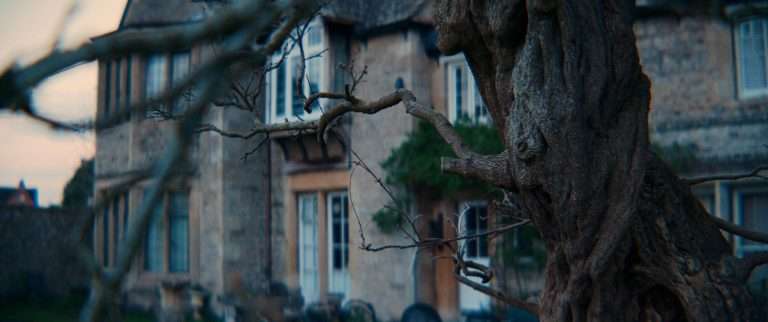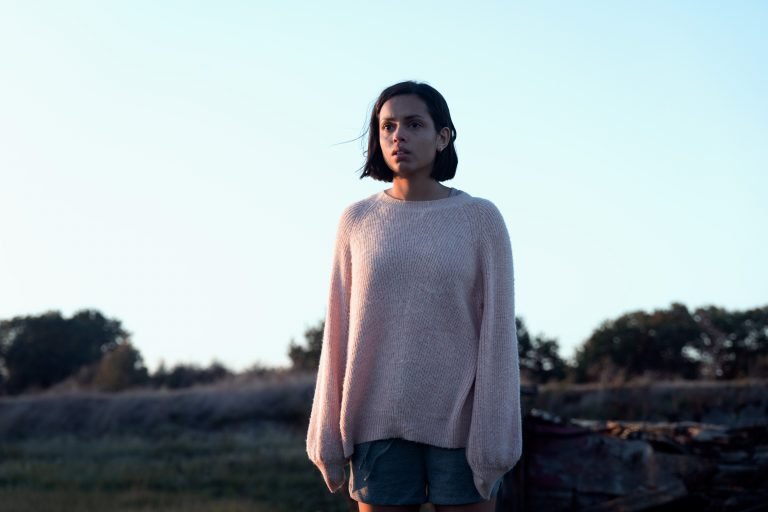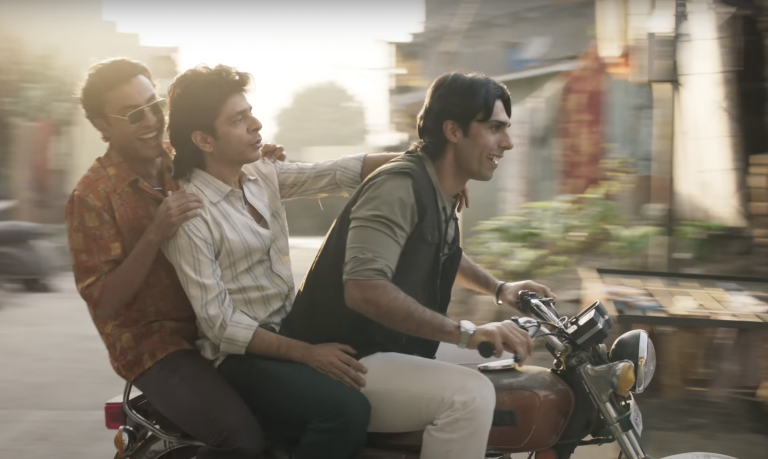If one were to describe time, one would possibly find several poetic ways to highlight its transcendental nature. For Prantik Basu, a graduate of the Film and Television Institute of India (FTII) and the director of Bela (2021), time appears to occur in juxtapositions. It might be repetitive in nature but is easily distinguishable from one moment to another. The documentary movie, Bela, becomes a 59-minute exploration of the various kinds of time that Basu allows us to experience as we walk down the roads and enter the homes of the locals in a small village in rural West Bengal. In it, time flourishes through the performance of gender roles, changing seasons, light and shadow, and night and day, all while being shrouded in a muslin of mystery.
Basu’s previous work, Sakhisona (2017), was woven around the unearthed stories that contributed to the lore in the village of Mogulmari. The black-and-white shots are laced with elemental folk music, which adds a rich layer of mystery to the entire short. Bela brings back the same mystery through its impeccable soundscape. In one of the first scenes, the Chau dance troop is seen rehearsing their performance. It plays out like a blur against a thick, dark sky lit up with lightning from time to time, visible to us in the growing darkness of the evening because of a single 100-watt bulb hung nearby. Alongside, the sound of the crickets mixed with the rhythmic drumbeats produces a hypnotic effect on the viewer, making Bela mysteriously charming right from the start. Basu captures nature sounds, silences, and human conversations to further orchestrate this enigmatic effect upon the audience in the rest of the film. When finally the sounds of nature, music, dance, and human conversation come together, we have already been transported into a timeless experience of life.
Related to Bela – Zero Fucks Given (2022) ‘MUBI’ Review: A resounding character-driven drama despite the haphazard narration
Throughout the documentary, I kept wishing I had watched it on a big theatre screen. I could only imagine how immersive that experience might have been. My screen filled with furiously grey nimbus clouds, lush green trees swaying to the wind, and electricity poles against a blue sky with cottony clouds. Basu’s camera is in no hurry, much like the rhythm of life in the village itself. It lingers where it likes and takes in the minute details without being affected. In one scene, it is dusk, and women folk at work are returning home framed in silhouettes against a twilight sky – a calming few moments before the lights come on and the conch shells are blown in the village houses. It plays out like an idyllic rural scene we have ever-so-often come across while reading Rabindranath Tagore or Bibhutibhushan Bandopadhay, two stalwarts of Bengali literature. It finds motion in static and vice versa. Curiously, the director’s gaze doesn’t meddle with the everyday lives of the locals. In fact, the camera becomes as much a participant as the people in the cradle of the cowshed. The gaze turns from an enchanted admirer of the Chhau performance to an ardent local eye that stops at a distance from a bunch of children waiting to light a cracker during Diwali – Basu is an artist at the watch.

The traditional and the modern also come together in Bela to produce a fictional time knitted carefully by Basu after two years-long shooting and living in this village. I will carry the scenes from Diwali, where we find the women lighting diyas around the house as blue disco lights patrol the courtyard of the house with me for a while. Is Basu trying to tell us that with time traditions will ebb and urbanization will flow in to change the socio-cultural makeup of villages like these, which, till now, have managed to stay away from the plunders of modern technological advancements?
Also, Read – The Last Music Store [2016] ‘MUBI’ Review: An ode to the passing time in the moving world
Bela offers itself up for contemplation about time and the possibilities of the documentary as an archive of this time. It is delicate in its handling of an endangered present. Bela, literally meaning ‘time’ in Bengali, aims to become the time governing the little village. It becomes a fiction deeply rooted in the non-fictional realities of the world.





![Christine [1983]: Absolutely Worthy of Its Cult Status](https://79468c92.delivery.rocketcdn.me/wp-content/uploads/2017/09/Christine-3-768x320.png)
![Be Right Back [2022]: ‘Slamdance’ Review – Lost amidst its Cryptic posturing](https://79468c92.delivery.rocketcdn.me/wp-content/uploads/2022/01/Be-Right-Back-768x432.jpeg)


